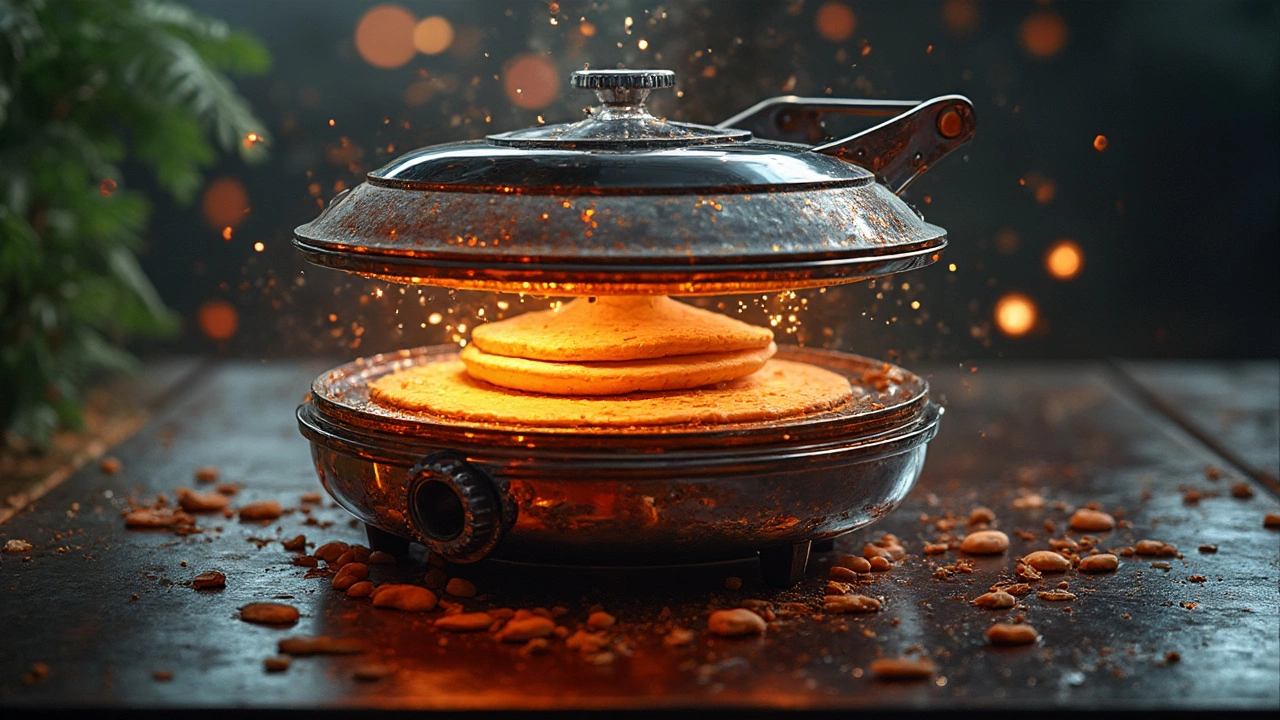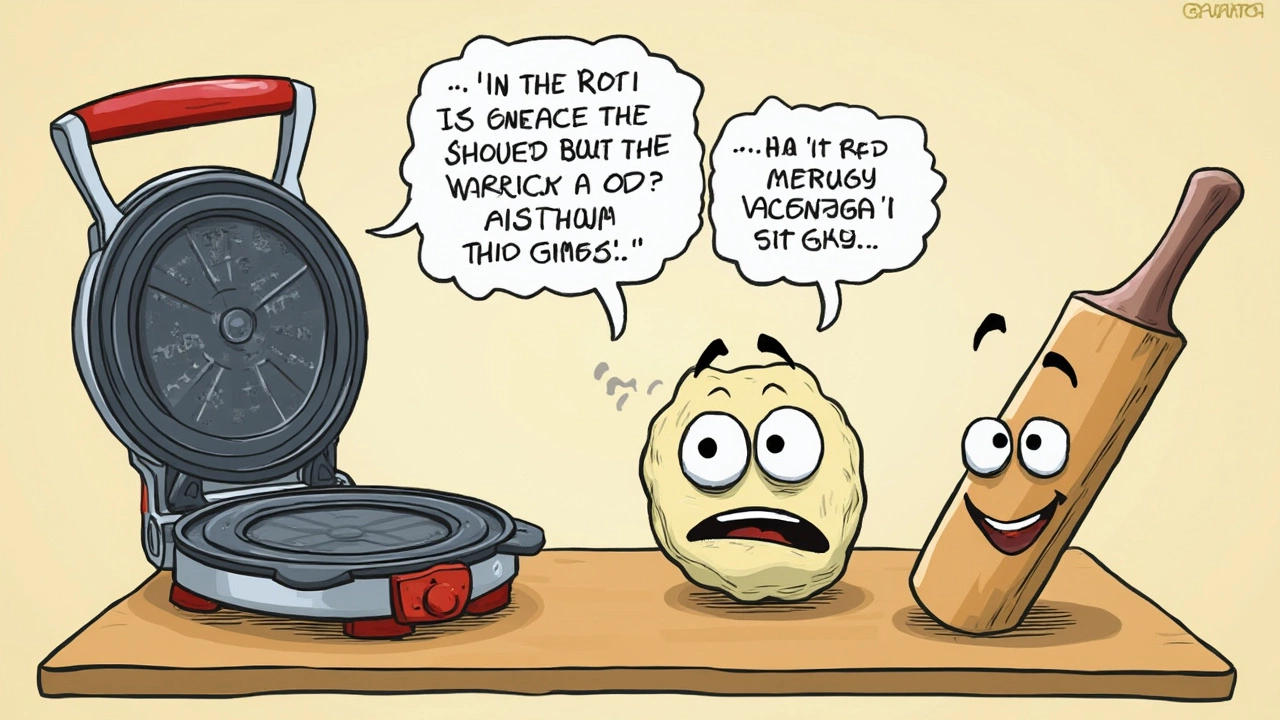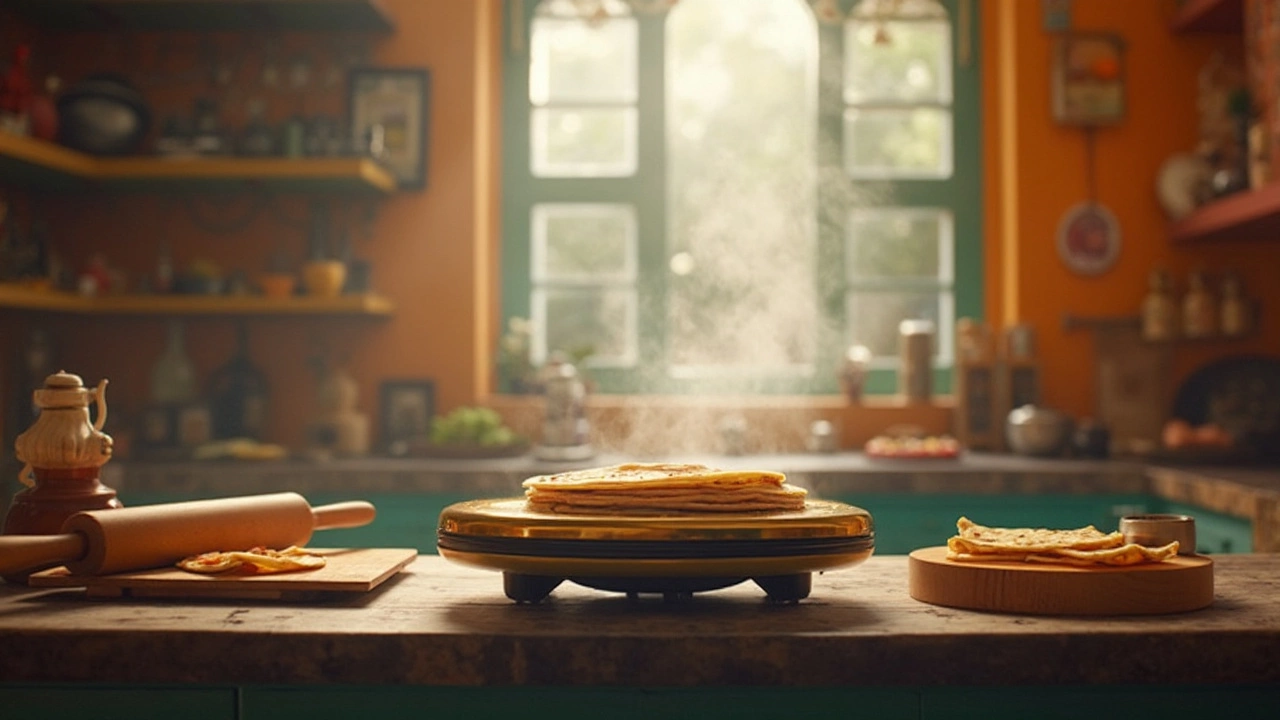9 Feb 2025
- 0 Comments
Roti makers seem like a dream come true for anyone who loves freshly made roti without the fuss. Just imagine, no more rolling and flipping! But before you jump on board, it's good to know some of the downsides.
First up, heating issues. It's pretty common for roti makers to have uneven heating. While you're hoping for that perfect golden-brown finish, you might end up with a roti that's a little overdone on one side and undercooked on the other. Not exactly what you signed up for, right?
Then there's the whole size thing. Most roti makers churn out rotis that are smaller than the traditional ones you're used to. This might not be a dealbreaker for some, but if you're a stickler for tradition, it could be a bummer.
So, is a roti maker heading to your shopping list, or are you sticking with the trusty rolling pin? Read on, and let's see if it's worth the swap!
- Heating Issues
- Size and Shape Limitations
- Skill and Precision
- Cleanup and Maintenance
- Electricity Dependency
Heating Issues
One of the main gripes people have with a roti maker is its tendency for uneven heating. Picture this: you're in the mood for some perfectly golden rotis, and your gadget decides to craft them in fifty shades of undercooked and overcooked. Disappointing, right?
Here's why it happens. Most roti makers have heating elements that don't always distribute warmth evenly. So while one area might hit that sweet cooking spot perfectly, another zone can be a tad neglected. This might result in those rogue patches that never quite reach your desired level of doneness.
Why Consistency Matters
When cooking roti, the right temperature matters more than you might think. Uneven heating can affect not just the look but also the taste and texture. No one wants a soggy middle or a crisp edge—it just throws off the whole dining experience.
What Can Be Done?
If your roti maker isn't quite living up to expectations, there are a few hacks to try before giving up entirely:
- Preheat even longer: Just like an oven, giving your roti maker extra pre-cooking time can sometimes help in distributing the heat better.
- Rotate: Manually turning your roti halfway through might help get that even color.
- Adjust pressure: Some suggest that a lighter press during cooking can prevent overheating in certain spots.
Bear in mind that not all roti makers are built the same. If your appliance is particularly moody, consider checking if it’s still under warranty or exploring reviews for other models with better heating reputations.
Size and Shape Limitations
When it comes to using a roti maker, everyone hopes for those perfectly round, evenly cooked rotis. However, the reality can be a bit different. One of the primary issues people encounter is that the rotis can turn out smaller than expected, not quite matching the traditional size you might be used to when making them by hand.
This size issue often ties back to the diameter of the plates on the roti maker. Most of these gadgets have plates that max out at around 8-10 inches in diameter, which might work fine for some, but could feel restrictive if you have visions of larger, more pliable breads.
Shape Constraints
As for the shape, well, let's just say precision isn't always the gadget's strong suit. Unlike manual rolling, where you can control the pressure and direction, a roti maker doesn't offer that kind of finesse. This often leads to rotis that lack the perfectly symmetrical roundness you might strive for when rolling by hand.
Many users find themselves struggling to achieve the ideal thickness as well. The even pressure that human hands apply is tricky for a machine to replicate, and you might end up with some parts thinner than others.
Tips to Tackle the Limitations
- Consider portioning your dough into smaller balls to better fit the roti maker plate.
- Experiment with dough consistency—sometimes a little tweak makes a difference in how the dough spreads.
- If size and shape are non-negotiable for you, blending manual techniques with the machine might give you the best results.
While these downsides are definitely something to think about, remember that practice and slight adjustments can help you make the most out of your roti maker. It's all about finding what works for you in your culinary adventures!

Skill and Precision
Using a roti maker might seem straightforward, but like any kitchen gadget, it has its learning curve. Many people imagine it's as easy as pressing a button, but there's more to it if you want that perfect puffed-up roti.
First off, the dough matters more than ever. Getting a soft, consistent dough is key. Too hard, and your rotis might end up resembling undercooked discs. Too soft, and you'll have a sticky mess on your hands. So, a little practice with dough texture can go a long way when using a roti maker.
Finding the Right Technique
Ever heard that phrase, practice makes perfect? Well, it's pretty spot on here. Initially, you might find that the rotis turn out a bit wonky. The timing for pressing and the amount of time spent cooking need precision, almost like in traditional methods. A slight misstep can lead to a batch that's more crispy than soft and tasty.
"Even with advanced kitchen gadgets, skill and patience make the most significant difference," says renowned chef Arjun Kapoor.
The consistency of your rotis can depend on how evenly you apply pressure and at what angle. So, repeated tries might be needed before you hit the sweet spot.
Sticking and Peeling Off
If you find your rotis sticking to the surface, it might be due to dough consistency or insufficient preheating. Letting the device preheat fully can help, and some users swear by a light brush of oil.
- Ensure the dough is smooth and pliable before flattening.
- Preheat the roti maker for the recommended time.
- Experiment with pressing techniques to avoid dough sticking.
These skills might sound troublesome, but once mastered, you can make delicious rotis in no time. Plus, it's a fun skill to brag about next time you're serving homemade rotis!
Cleanup and Maintenance
Alright, so you've just made a batch of rotis, and now comes the part we all love to hate: the cleanup process. This is where your roti maker may reveal its true, sometimes annoying, nature.
The stuff that makes roti making convenient also makes it a bit of a hassle to clean. The surface of a roti maker is often non-stick, which sounds great for cooking but not so much when it comes to scrubbing off burnt bits. Those little charred crumbs are far too good at clinging to the plates!
Keeping it Clean
To make your life easier, let the roti maker cool down a bit before you start cleaning. You don't want to risk burns or damage the appliance. Once it's cooled, use a damp cloth or sponge to wipe down the surface. Just try to avoid anything too abrasive that might ruin the non-stick coating.
In case things get messy, and they often do, a mix of vinegar and water can be your best friend. It can help loosen stubborn bits that refuse to come off with just a wipe.
Routine Maintenance
Taking care of regular maintenance can prolong the life of your roti maker. Check the electrical cord for any signs of wear and tear and make sure the heat settings are working as expected. It's usually better to catch small issues before they become major headaches.
- Wipe down after every use
- Keep an eye on the non-stick surface
- Check the plug and cord periodically
- Avoid using metal utensils
Remember, keeping a roti maker in tip-top shape isn't just about cleanliness—it affects how well your roti maker works and how long it lasts. A little attention goes a long way!

Electricity Dependency
Let's talk about one of the not-so-obvious downsides of using a roti maker: electricity dependency. These gadgets run entirely on electric power, which means there are a few things you need to consider.
First off, with the rising cost of electricity, everyday use could slightly affect your monthly bills. While it won't be a massive spike, every little bit adds up.
Another thing to think about is power availability. If you live in an area prone to power outages, a roti maker might let you down during those crucial moments when you're craving fresh roti. Plus, unlike traditional methods, there's no manual fallback—when the power goes out, so does your dinner plan!
Power and Performance
The performance of a roti maker can also be affected by inconsistent voltage. Sometimes, voltage fluctuations result in uneven heating, making it tricky to get that perfect roti time after time.
A lot of users mention that these gadgets work best only under certain electric conditions. Might not sound like a biggie, but if your house experiences frequent voltage dips, you might notice the difference.
Before you scoff at these headaches, just imagine the frustration of prepping everything, only to lose power mid-cook. Not fun, right?
- Keep a close eye on your electric expenses post-purchase.
- Ensure you have a stable power supply for consistent performance.
- Consider purchasing a voltage stabilizer to prevent inconsistent heating issues.
